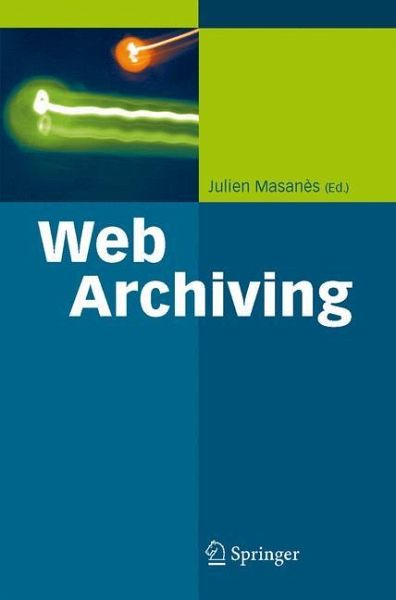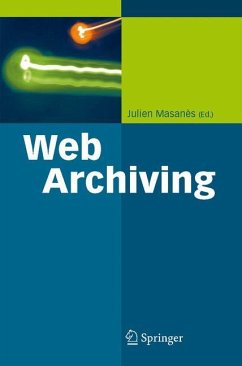
Web Archiving

PAYBACK Punkte
20 °P sammeln!
This book will focus on the Web as a publishing medium, which was its first aim, and makes it the largest content information repository ever. Public Information available on the Internet, mainly on the Web, is larger than information distributed on any other media today. Strategic business information and communication is now also usually accessed and operated thought internet/extranet/intranet services. The raw nature of Web content, the unpredictable remote changes that can affect it, and the growth of database-driven web site make usual archiving and back-up procedures inefficient to preserve Web material. Specific archiving procedures to preserve this content for mid and long term are hardly ever in place in most organization. The organization of this book is delineated by three stages (building, using, and preserving). Each chapter is intended to provide first a detailed presentation of existing methods and available technology, often inspired from other domains but adapted to the specific topic of Web archiving.
The public information available on the Web today is larger than information distributed on any other media. The raw nature of Web content, the unpredictable remote changes that can affect it, the wide variety of formats concerned, and the growth in data-driven websites make the preservation of this material a challenging task, requiring specific monitoring, collecting and preserving strategies, procedures and tools.
Julien Masanès, Director of the European Archive, has assembled contributions from computer scientists and librarians that altogether encompass the complete range of tools, tasks and processes needed to successfully preserve the cultural heritage of the Web. His book serves as a standard introduction for everyone involved in keeping alive the immense amount of online information, and it covers issues related to building, using and preserving Web archives both from the computer scientist and librarian viewpoints.
Practitioners will find in this book a state-of-the-art overview of methods, tools and standards they need for their activities. Researchers as well as advanced students in computer science will use it as an introduction to this new field with a hopefully stimulating review of open issues where future work is needed.
Julien Masanès, Director of the European Archive, has assembled contributions from computer scientists and librarians that altogether encompass the complete range of tools, tasks and processes needed to successfully preserve the cultural heritage of the Web. His book serves as a standard introduction for everyone involved in keeping alive the immense amount of online information, and it covers issues related to building, using and preserving Web archives both from the computer scientist and librarian viewpoints.
Practitioners will find in this book a state-of-the-art overview of methods, tools and standards they need for their activities. Researchers as well as advanced students in computer science will use it as an introduction to this new field with a hopefully stimulating review of open issues where future work is needed.














